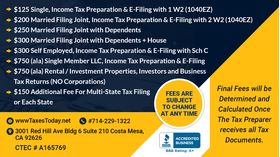What is Depreciation, amortization, and depletion - Explained - TaxesToday.net
In the world of accounting and finance, businesses often encounter the concepts of depreciation, amortization, and depletion. These methods play a crucial role in allocating the costs of assets over their useful lives, allowing companies to match expenses with the revenue generated by these assets. While these terms may sound similar, they have distinct applications and significance depending on the type of asset involved. In this comprehensive article, we will explore each of these methods in detail, providing you with a clear understanding of their purpose, calculation, and relevance in financial reporting.
Section 1: Depreciation
What is Depreciation?
Depreciation is an accounting practice that involves spreading the cost of a tangible asset over its useful life. Tangible assets are physical assets such as machinery, equipment, vehicles, and buildings. The purpose of depreciation is to reflect the gradual deterioration, wear and tear, or obsolescence of these assets over time. By allocating the cost of the asset over its useful life, businesses can accurately match the expenses associated with the asset to the revenues it generates.
Depreciation Methods
There are several methods used to calculate depreciation, each with its own set of rules and formulas. The most common methods include:
- Straight-Line Method: Under this method, the asset's cost is evenly distributed over its useful life. The formula for calculating annual depreciation is:(Cost of Asset - Salvage Value) / Useful Life For example, if a company purchases a machine for $100,000 with a useful life of 10 years and a salvage value of $20,000, the annual depreciation would be ($200,000 - $20,000) / 10 = $18,000.
- Declining Balance Method: This method allows for a higher depreciation expense in the earlier years of an asset's life and lower expenses in later years. The formula for calculating depreciation under this method involves applying a fixed depreciation rate to the asset's book value. The rate is typically double the straight-line rate.
- Units of Production Method: This method calculates depreciation based on the asset's usage or output. The formula involves dividing the depreciable cost of the asset by the estimated total units of production over its useful life. The depreciation expense for a specific period is then determined by multiplying the number of units produced during that period by the per-unit depreciation rate.
Depreciation and Taxes
Depreciation also has significant implications for taxation. In many countries, including USA, Canada, businesses are allowed to deduct the depreciation expense from their taxable income, reducing their tax liability. The tax regulations regarding depreciation may vary, and businesses must adhere to the specific guidelines provided by the tax authority, such as IRS.
Example of Depreciation
To illustrate the concept of depreciation, let's consider a practical example. XYZ Manufacturing Company purchases a delivery truck for $50,000. The truck has an estimated useful life of five years and a salvage value of $5,000. Using the straight-line method, the annual depreciation expense would be ($50,000 - $5,000) / 5 = $9,000. Therefore, XYZ Manufacturing Company would recognize a depreciation expense of $9,000 each year for five years.
Section 2: Amortization
What is Amortization?
Amortization is an accounting practice used to allocate the cost of intangible assets over their useful lives. Intangible assets are non-physical assets that have value but lack a physical presence. Examples of intangible assets include patents, copyrights, trademarks, and goodwill. Similar to depreciation, amortization allows businesses to match the expenses associated with intangible assets to the revenue they generate.
Amortization Methods
Unlike depreciation, which has multiple methods, amortization typically follows the straight-line method. Under this method, the cost of the intangible asset is evenly spread over its useful life. The formula for calculating annual amortization is:
Cost of Intangible Asset / Useful Life
For example, if a company purchases a patent for $100,000 with a useful life of 10 years, the annual amortization expense would be $100,000 / 10 = $10,000.
Amortization vs. Depreciation
While depreciation and amortization share similarities, there are key differences between the two:
- Asset Types: Depreciation applies to tangible assets, while amortization applies to intangible assets.
- Methods: Depreciation has multiple methods, while amortization generally follows the straight-line method.
- Salvage Value: Depreciation considers salvage value, while amortization does not.
- Contra Account: Depreciation is recorded in a contra asset account called accumulated depreciation, while amortization is typically recorded directly against the intangible asset account.
Example of Amortization
Let's say XYZ Tech Company purchases a software patent for $200,000, with a useful life of five years. Using the straight-line amortization method, the annual amortization expense would be $200,000 / 5 = $40,000. Therefore, XYZ Tech Company would recognize an amortization expense of $40,000 each year for five years.
Section 3: Depletion
What is Depletion?
Depletion is an accounting method used to allocate the cost of natural resources over the period of their extraction. Natural resources, such as oil, gas, minerals, and timber, are finite in nature and have a limited supply. Depletion allows companies in industries such as mining, oil extraction, and timber harvesting to account for the gradual exhaustion of these resources.
Depletion Methods
There are two common methods used for depletion:
- Cost Depletion Method: This method involves allocating the cost of the natural resource over the estimated total recoverable units. The formula for calculating depletion expense is:(Cost of Resource - Salvage Value) / Estimated Total Recoverable UnitsThe depletion expense for a specific period is determined by multiplying the number of units extracted during that period by the per-unit depletion rate.
- Percentage Depletion Method: Under this method, a fixed percentage of the gross income from the sale of the natural resource is allocated as the depletion expense. The percentage is typically determined by tax regulations or industry-specific guidelines.
Depletion and Taxes
Similar to depreciation and amortization, depletion can also have tax implications. In some cases, businesses may be allowed to claim a depletion deduction for tax purposes. The specific rules and regulations regarding depletion deductions vary by jurisdiction and industry.
Example of Depletion
Suppose ABC Mining Company invests $1 million in developing a gold mine. The company estimates that the mine contains 100,000 ounces of gold. Using the cost depletion method, the depletion rate per ounce would be $1,000,000 / 100,000 ounces = $10 per ounce. If the company extracts and sells 10,000 ounces of gold in a specific period, the depletion expense would be $10 * 10,000 = $100,000.
Section 4: Application and Importance of Depreciation, Amortization, and Depletion
Matching Principle
The fundamental principle behind depreciation, amortization, and depletion is the matching principle. This principle states that expenses should be recognized in the same period as the revenues they help generate. By allocating the costs of assets over their useful lives, businesses can accurately match the expenses associated with these assets to the revenue they generate over time.
Financial Statements
Depreciation, amortization, and depletion have a significant impact on a company's financial statements. Accumulated depreciation and accumulated amortization accounts appear on the balance sheet as contra accounts to the corresponding asset accounts. These accounts reflect the total amount of depreciation or amortization recognized since the acquisition of the assets.
On the income statement, depreciation, amortization, and depletion expenses are reported as separate line items. These expenses reduce the company's net income, reflecting the costs associated with using or depleting assets to generate revenue.
Tax Planning and Reporting
Depreciation, amortization, and depletion also play a crucial role in tax planning and reporting. These expenses are deductible for tax purposes, reducing a company's taxable income and, subsequently, its tax liability. By strategically selecting the appropriate depreciation, amortization, or depletion method, businesses can optimize their tax deductions and manage their tax obligations effectively.
Section 5: Conclusion
Depreciation, amortization, and depletion are essential concepts in the world of accounting and finance. By allocating the costs of assets over their useful lives, these methods enable businesses to accurately match expenses with the revenue generated by these assets. Depreciation applies to tangible assets, amortization to intangible assets, and depletion to natural resources. Understanding and properly applying these methods is crucial for financial reporting, tax planning, and overall financial management. By employing these practices effectively, businesses can ensure accurate and transparent financial statements while optimizing their tax deductions and managing their tax obligations.


